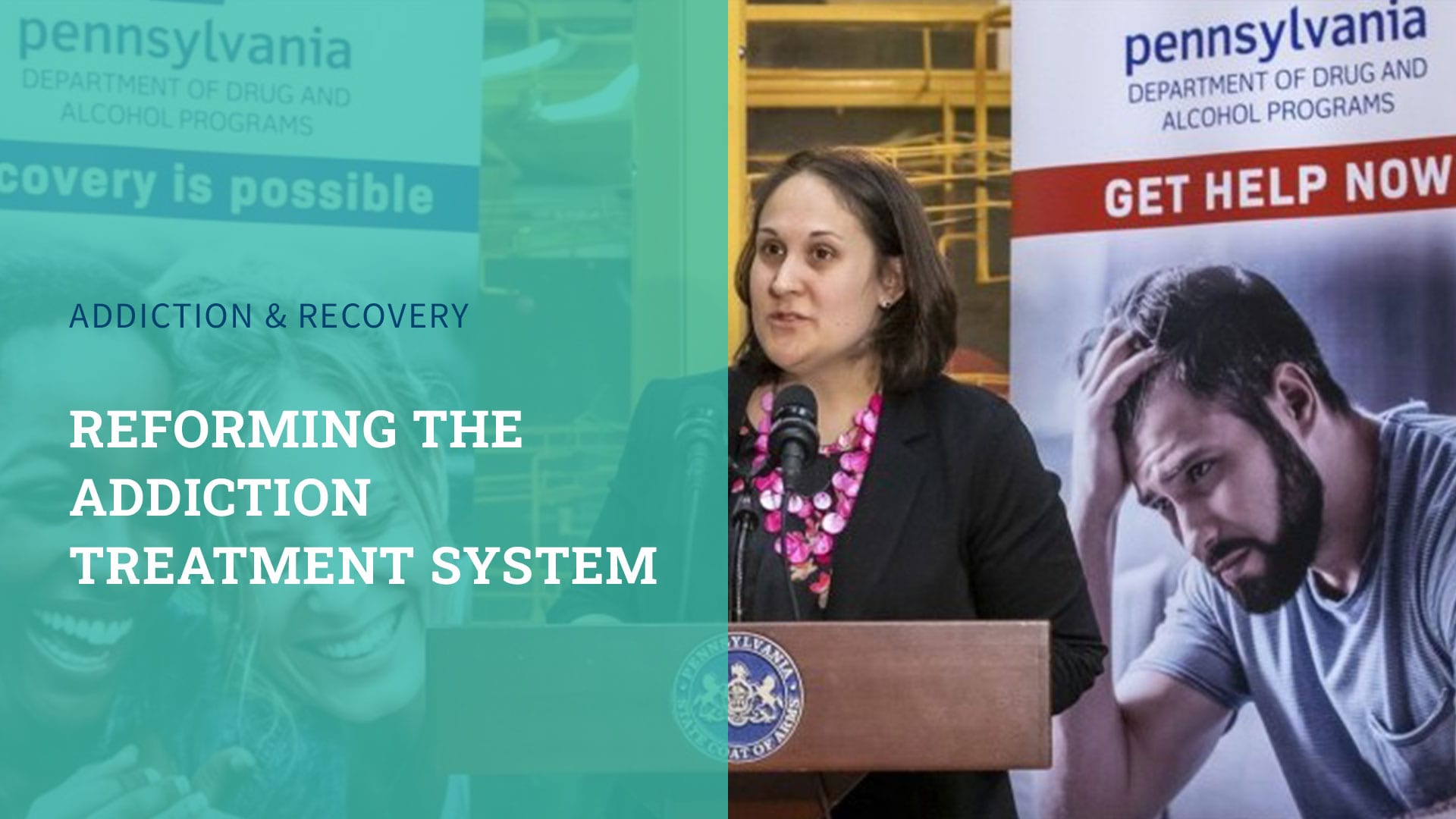Pennsylvania Department of Drug and Alcohol Programs Secretary Jen Smith (pictured above) has said the ASAM transition expands the tools and resources available to Pennsylvania’s treatment providers and ensures that all Pennsylvanians can receive high-quality, patient-focused care that makes recovery possible. Photo: MyChesCo
Transition to ASAM, MAT mandates are major milestones in Pennsylvania’s evolution
By Jason Snyder, Regional Director of Strategic Partnerships, Pinnacle Treatment Centers
In early 2017, the Pennsylvania Department of Drug and Alcohol Programs (DDAP) announced the beginning of a major transition to the ASAM Criteria, a comprehensive set of guidelines governing the level of care most appropriate for patients and the services provided at that level. Improved quality of care through outcome-oriented and results-based treatment was among the many changes this transition promised.
DDAP cited several reasons for the change, from ensuring the necessary federal Medicaid funding to support the continuation of residential services, to the consistency that the most widely used system would bring to the Pennsylvania provider and payer world.
More than three years later, the evolution continues, and today we’re seeing another round of milestone policy changes being implemented that are intended to align the services Pennsylvania treatment providers offer with the services recommended by the American Society of Addiction Medicine (ASAM) for each level of care. As part of that alignment, which is expected to be fully implemented by July 1, 2021, hours of therapy, service descriptions and staff qualifications are all changing. I’ll examine these changes in more depth in an upcoming blog.
On a parallel track, another major change has taken effect with the release of DDAP’s most recent Case Management and Clinical Services Manual. The provider community is now wrestling with the mandate that each of the three Food and Drug Administration-approved medications to treat opioid use disorder (OUD), i.e., methadone, buprenorphine and naltrexone, be available at every level of care. In Pinnacle Treatment Centers’ experience across the eight states in which we provide services, including ASAM Level 3 (residential/inpatient services), making medication available at each of those levels has been an invaluable tool in engaging and retaining patients in treatment. And we know length of stay in the continuum of care is directly related to a greater likelihood of recovery.
Expanding access to medication-assisted treatment (MAT)
Evidence-based care for OUD and MAT are one in the same. MAT is the gold standard for treating people with OUD. Yet many addiction treatment providers in Pennsylvania still are not fully committed to MAT because of their treatment philosophy. However, with the new policy changes, any treatment provider contracted with a county-level drug and alcohol administrator (better known as a single county authority [SCA]) must be able to not only provide these medications (either directly or through partnerships with other providers), they also cannot refuse to accept a person on any of these medications.
One of the best examples to illustrate how the new policy should work involves the person being treated at an outpatient level with methadone. These patients can sometimes require a higher level of care to treat another SUD while continuing to treat their OUD with methadone. Most residential providers in Pennsylvania previously would not accept that patient into their system, because they won’t accommodate the patient’s daily dosing of methadone, which comes with multiple, sometimes burdensome, federal and state requirements the provider must meet. With the policy changes, these providers can no longer refuse these patients.
For patients who are treating their OUD successfully but struggling with other substances, the ability to continue their OUD treatment at a higher level of care will enhance their ability to recover from other substance use.
There are challenges to implementing this policy. Geography is one of them. In rural Pennsylvania, providers rightfully argue that access to these medications is limited at best or, in some cases, nonexistent. Methadone and buprenorphine, which require special licenses to dispense or prescribe, can be especially hard to access because there is a dearth of these types of MAT providers in rural areas despite multiple initiatives over the last several years to address lack of MAT providers in rural Pennsylvania. The commonwealth has acknowledged this challenge and, through a waiver, will exempt rural providers from making MAT available where the geographic burdens make it unfeasible. Although the waiver eases the requirement on the provider, it does nothing to advance evidence-based care.
Funding is also a challenge, especially given the complexities of Medicaid behavioral health managed care and county-based contracting. In keeping with the example above of the methadone patient, residential treatment provider and methadone provider, often times, the methadone provider partnering with the residential facility to temporarily provide methadone will be out of the patient’s managed care network. Special single-case agreements with the managed care organization (MCO) need to be approved in those instances, but the process for getting them in place can be bureaucratic and slow. For SCA-funded patients, the process may be slightly smoother. Still, combined with low reimbursement for the provision of the medication and the logistic and regulatory hoops, there’s little incentive to provide the service.
The commonwealth continues to take bold steps toward evidence-based treatment and improved access to MAT. But the devil is in the details. Big challenges as outlined here, including geography/lack of MAT providers, funding and burdensome regulations will stymie implementation if they aren’t quickly and effectively addressed. DDAP could further enhance the transition by facilitating the creation of a formal advisory committee. DDAP, treatment providers, the Department of Human Services (which holds the contracts with the MCOs), the MCOs themselves, SCAs and other key stakeholders need to come together to work through these and other significant barriers.
Creativity and collaboration are called for in this situation. What creative solutions exist? What are your ideas? I’d love to hear them.
Click here for Pinnacle’s Pennsylvania outpatient opioid treatment program locations or call 800-782-1520.
